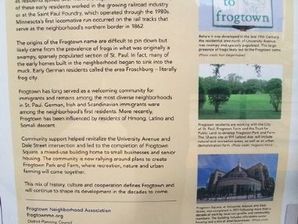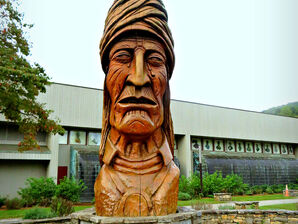Memorials

Discovered by Joseph R. Walker, American trail-blazer who left the San Joaquin Valley through this pass in 1834. This area was traversed by topographer Edward M. Kern, after whom the Kern River was named, while accompanying the Fremont expedition of 1845. After 1860 it became a mining freight route to Owens Valley.

Dedicated to the memory of Sir William Wallace The Great Scottish Patriot and Hero who fought for freedom for his countrymen and gave his life in this noble cause. David A. Wallace A Scottish immigrant who had served his community and state with distinction. As a civic leader he gained the respect and trust of all who knew him.

By May of 1854 the air was already electrified by the sizzling-hot debate of pro-slavery versus anti-slavery when Congress passed the Kansas-Nebraska Act. Now, the western territory was open and available, and whoever settled Kansas first would determine its status as a free or slave state. A new frenzied wave of migration began. City of Kansas residents were acutely affected. Missouri was a slave state and most residents held a pro-South bias.
The addition of another free state on the... Read More
University of North Carolina at Chapel Hill Undergraduate students in Grant Glass' Fall 2019 English 105i course, "Writing in Digital Humanities," documented memorials in locations throughout the world.

The Frogtown neighborhood developed in the late 19th Century as residents spilled over from the adjacent downtown area. Many of these early residents worked in the growing railroad industry or at the Saint Paul Foundry, which operated through the 1980s. Minnesota's first locomotive run occurred on the rail tracks that served as the neighborhood's northern border in 1862.
The origins of the Frogtown name are difficult to pin down, but likely came from the prevalence of frogs in what... Read More

The members of the Galesville Heritage Society invite you to explore their historic village. First settled in 1654 on the banks of West River, Galesville and its history are fundamentally linked to the Chesapeake Bay. Native Americans, English settlers, African slaves, German immigrants, wealthy vacationers, and recreational boaters have all played a part in Galesville's history. Locals have earned their living fishing, crabbing, oystering, farming, and running small businesses. Some... Read More

Welsh Settlement circa 1840, immigrants from Wales settled in Freedom and nearby towns and contributed to the economic, religious, and social life of the area.

Hugh C. MacFarlane, an immigrant from Scotland, purchased land in November 1886 and built a cigar factory that started production on June 15, 1892. MacFarlane and other developers offered free land and buildings, bringing in more cigar factories and growth that led to the formation of the City of West Tampa on May 18, 1895. Other immigrants from Cuba, Spain, Italy,
Scotland, Ireland, Germany and different parts of the United States made up the population, giving the town its distinctive,... Read More

A enormous carving of a bust of Sequoyah, the creator of the Cherokee alphabet. The sculptor says the statue is influenced by a combination of various Native Americans and represents the "cry of the red man," which means the protest of the Native Americans. The artist wanted to draw attention to the "theft and trickery" the Native Americans suffered as their land was stolen and to highlight their bravery.

In 1740, Dr. John McCormick, a Scots (Scotch)-Irish immigrant bought 395 acres from Jost Hite and established White House Farm. Stone barn built by McCormick is the oldest standing in West Virginia. House served as a tavern and inn in early 1800s. In 1863, Major Harry Gilmor, 7th Va. Cavalry, CSA, shot and killed Captain George Somers, US Army in skirmish here. In 1979, listed in National Register.
